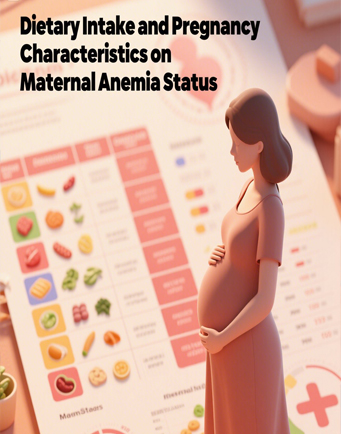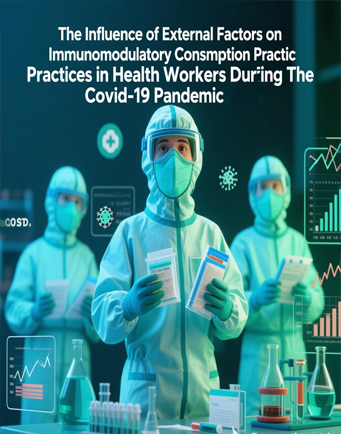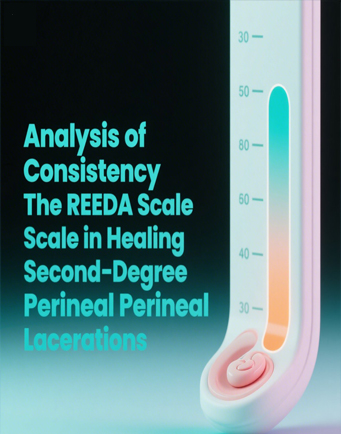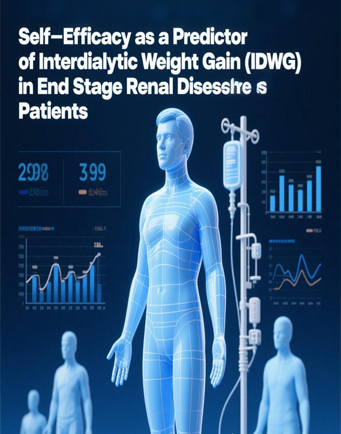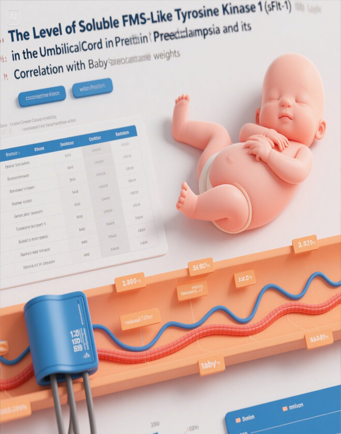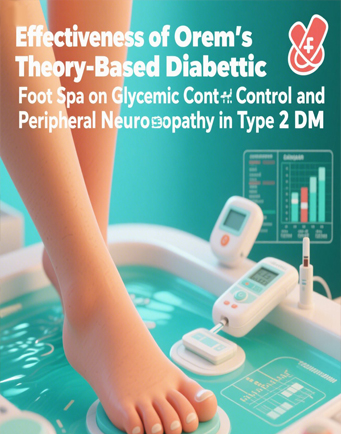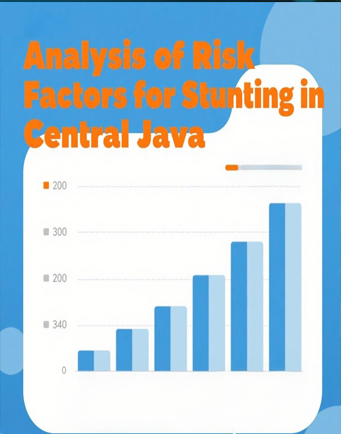Construction of Validity and Reliability of The SBAR-Based Assessment Scale among Nurses

Downloads
Situation, Background, Assessment, Recommendation (SBAR) is a communication tool used to convey information clearly and in a structured manner, especially in the context of health services. The implementation of this assesment scale consideration has not been carried out optimally for nurses in the hospital. This study aims to analyze the validity and reliability of the SBAR-based weighing evaluation instrument from primary nurses and associate nurses. Multivariate validity and reliability test using the Exploratory Factors Analysis (EFA) test. The results aim to validate the instrument content. The numbers in the table show the loading factor values for each statement item which have been sorted from the largest value to the smallest value for each component. Statement items are valid and have an important correlation in the handover implementation instrument if they have a factor loading value of <0.40. Of the 25 statement items, 8 items were invalid, namely item numbers 2,3,4,6,10,12,17,19 while the other 17 items were declared valid and formed 4 components (Component 1; Situation indicator, Component 2; Backgound indicator, Component 3; Assessment indicator, Component 4; Assesment) which were used as indicators for compiling the SBAR-based handover implementation instrument. CFA test results were the relative chi-square value (CMIN/df) shows a fairly good fit with a ratio <5, the comparative fit index (CFI) value indicates marginal fit because it is in the range 0.80<CFI <0.90, The root mean square error (RMSEA) value indicates a reasonable agreement with a value of <0.08, the goodness-of-fit (GoF) value indicates a good fit because it is >0.80. It can be interpreted that based on the results of the CFA analysis it has fulfilled the construct feasibility test so that in general it can be said that the handover evaluation instrument by primary nurses and associate nurses is fit to be used in measuring handover implementation.
Abbaszade, A., Assarroudi, A., Armat, M. R., Stewart, J. J., Rakhshani, M. H., Sefidi, N., & Sahebkar, M. (2021). Evaluation of the Impact of Handoff Based on the SBAR Technique on Quality of Nursing Care. Journal of Nursing Care Quality, 36(3), E38–E43. https://doi.org/10.1097/NCQ.0000000000000498
Albeshri, S. M., Alharbi, R. A., Alhawsa, H. zakria, Bilal, A. M., Alowaydhi, B. Y., Alzahrani, O. M., Fallata, S. M., Almaliki, S. O., Alfadly, W. N., & Albarakati, A. obaidullah. (2024). The Role of Nursing in Reducing Medical Errors: Best Practices and Systemic Solutions. Journal of Ecohumanism, 3(7),613–4622. https://doi.org/10.62754/joe.v3i7.4574
Alizadeh-risani, A., Mohammadkhah, F., Pourhabib, A., Fotokian, Z., & Khatooni, M. (2024). Comparison of the SBAR method and modified handover model on handover quality and nurse perception in the emergency department: a quasi-experimental study. BMC Nursing, 23(1), 585. https://doi.org/10.1186/s12912-024-02266-4
Ashcraft, A. S., & Owen, D. C. (2017). Comparison of standardized and customized SBAR communication tools to prevent nursing home resident transfer. Applied Nursing Research, 38, 64–69. https://doi.org/10.1016/j.apnr.2017.09.015
Bakr, M., Elsaiad, H., & Rashed, S. (2023). Effectiveness of SBAR Daily Shift Report Training program on quality of care among staff nurses. Menoufia Nursing Journal, 8(3), 45–66. https://doi.org/10.21608/menj.2023.320812
Bonds, R. L. (2018). SBAR Tool Implementation to Advance Communication, Teamwork, and the Perception of Patient Safety Culture. Creative Nursing, 24(2), 116–123. https://doi.org/10.1891/1078-4535.24.2.116
Bressan, V., Mio, M., & Palese, A. (2020). Nursing handovers and patient safety: Findings from an umbrella review. Journal of Advanced Nursing, 76(4), 927–938. https://doi.org/10.1111/jan.14288
Citra, S., Tukimin bin, S., Regidor III, D., & Aris Citra, W. (2024). Effective Communication in Nursing: A Comprehensive Systematic Review of Best Practices. Journal Of Nursing Science Research, 1(1), 34–48. https://doi.org/10.33862/jnsr.v1i1.450
Dalky, H. F., Al-Jaradeen, R. S., & AbuAlRrub, R. F. (2020). Evaluation of the Situation, Background, Assessment, and Recommendation Handover Tool in Improving Communication and Satisfaction Among Jordanian Nurses Working in Intensive Care Units. Dimensions of Critical Care Nursing, 39(6), 339–347. https://doi.org/10.1097/DCC.0000000000000441
Desmedt, M., Ulenaers, D., Grosemans, J., Hellings, J., & Bergs, J. (2021). Clinical handover and handoff in healthcare: a systematic review of systematic reviews. International Journal for Quality in Health Care, 33(1). https://doi.org/10.1093/intqhc/mzaa170
Dietl, J. E., Derksen, C., Keller, F. M., & Lippke, S. (2023). Interdisciplinary and interprofessional communication intervention: How psychological safety fosters communication and increases patient safety. Frontiers in Psychology, 14(1164288). https://doi.org/10.3389/fpsyg.2023.1164288
Fuchshuber, P., & Greif, W. (2022). Creating Effective Communication and Teamwork for Patient Safety. In The SAGES Manual of Quality, Outcomes and Patient Safety (pp. 443–460). Springer International Publishing. https://doi.org/10.1007/978-3-030-94610-4_23
Husna, N., Rahman, W., Ayuni, D. Q., Mohd Said, F. B., & Nambiar, N. (2024). The Impact of ISBAR3 (Identity, Situation, Background, Assessment, Recommendation, Read-back, Risk) Implementation on Nursing Shift Handover Quality and Patient Satisfaction Improvement at Pariaman Regional Public Hospital. Malaysian Journal of Nursing, 16(Suppl 1), 150–165. https://doi.org/10.31674/mjn.2024.v16isupp1.015
Jeong, J. H., & Kim, E. J. (2020). Development and Evaluation of an SBAR-based Fall Simulation Program for Nursing Students. Asian Nursing Research, 14(2), 114–121. https://doi.org/10.1016/j.anr.2020.04.004
Kitson, A. L., Muntlin Athlin, Å., Elliott, J., & Cant, M. L. (2014). What’s my line? A narrative review and synthesis of the literature on Registered Nurses’ communication behaviours between shifts. Journal of Advanced Nursing, 70(6), 1228–1242. https://doi.org/10.1111/jan.12321
Lo, L., Rotteau, L., & Shojania, K. (2021). Can SBAR be implemented with high fidelity and does it improve communication between healthcare workers? A systematic review. BMJ Open, 11(12), e055247. https://doi.org/10.1136/bmjopen-2021-055247
Manias, E., Geddes, F., Watson, B., Jones, D., & Della, P. (2016). Perspectives of clinical handover processes: a multi‐site survey across different health professionals. Journal of Clinical Nursing, 25(1–2), 80–91. https://doi.org/10.1111/jocn.12986
Martínez-Fernández, M. C., Castiñeiras-Martín, S., Liébana-Presa, C., Fernández-Martínez, E., Gomes, L., & Marques-Sanchez, P. (2022). SBAR Method for Improving Well-Being in the Internal Medicine Unit: Quasi-Experimental Research. International Journal of Environmental Research and Public Health, 19(24), 16813. https://doi.org/10.3390/ijerph192416813
Michael, M., Griggs, A. C., Shields, I. H., Sadighi, M., Hernandez, J., Chan, C., McHugh, M., Nichols, B. E., Joshi, K., Testa, D., Raj, S., Preble, R., Lazzara, E. H., & Greilich, P. E. (2021). Improving handover competency in preclinical medical and health professions students: establishing the reliability and construct validity of an assessment instrument. BMC Medical Education, 21(1), 518. https://doi.org/10.1186/s12909-021-02943-x
Miming, O., Santhna Letchmi, P., & Faridah Moh, S. (2023). Development Mobile Learning Application : Clinical Education Management Information System (Cemis) Among Health Science Students In Indonesia. Jurnal Inspirasi Kesehatan, 1(2), 115–127. https://doi.org/10.52523/jika.v1i2.36
Müller, M., Jürgens, J., Redaèlli, M., Klingberg, K., Hautz, W. E., & Stock, S. (2018). Impact of the communication and patient hand-off tool SBAR on patient safety: a systematic review. BMJ Open, 8(8), e022202. https://doi.org/10.1136/bmjopen-2018-022202
Odone, A., Bossi, E., Scardoni, A., Balzarini, F., Orlandi, C., Arrigoni, C., Signorelli, C., & Garancini, P. (2022). Physician-to-Nurse Handover: A Systematic Review on the Effectiveness of Different Models. Journal of Patient Safety, 18(1), e73–e84. https://doi.org/10.1097/PTS.0000000000000701
Rehm, C., Zoller, R., Schenk, A., Müller, N., Strassberger-Nerschbach, N., Zenker, S., & Schindler, E. (2021). Evaluation of a Paper-Based Checklist versus an Electronic Handover Tool Based on the Situation Background Assessment Recommendation (SBAR) Concept in Patients after Surgery for Congenital Heart Disease. Journal of Clinical Medicine, 10(24), 5724. https://doi.org/10.3390/jcm10245724
Shahid, S., & Thomas, S. (2018). Situation, Background, Assessment, Recommendation (SBAR) Communication Tool for Handoff in Health Care – A Narrative Review. Safety in Health, 4, 7. https://doi.org/10.1186/s40886-018-0073-1
Shinta, N. D., & Bunga, A. L. (2024). The implementation of SBAR communication method for patient safety: A literature review. Malahayati International Journal of Nursing and Health Science, 7(5), 537-553. https://doi.org/10.33024/minh.v7i5.190
Simamora, R. H., & Fathi, A. (2019). The Influence of Training Handover based SBAR communication for improving Patients Safety. Indian Journal of Public Health Research & Development, 10(9), 1280. https://doi.org/10.5958/0976-5506.2019.02755.4
Sureshchandar, G. S. (2023). Quality 4.0 – a measurement model using the confirmatory factor analysis (CFA) approach. International Journal of Quality & Reliability Management, 40(1), 280–303. https://doi.org/10.1108/IJQRM-06-2021-0172
Sürücü, L., Yıkılmaz, İ., & Maşlakçı, A. (2024). Exploratory Factor Analysis (EFA) in Quantitative Researches and Practical Considerations. Gümüşhane Üniversitesi Sağlık Bilimleri Dergisi, 13(2), 947–965. https://doi.org/10.37989/gumussagbil.1183271
Toumi, D., Dhouib, W., Zouari, I., Ghadhab, I., Gara, M., & Zoukar, O. (2024). The SBAR tool for communication and patient safety in gynaecology and obstetrics: a Tunisian pilot study. BMC Medical Education, 24(1), 239. https://doi.org/10.1186/s12909-024-05210-x
Wang, Y.-Y., Wan, Q.-Q., Lin, F., Zhou, W.-J., & Shang, S.-M. (2018). Interventions to improve communication between nurses and physicians in the intensive care unit: An integrative literature review. International Journal of Nursing Sciences, 5(1), 81–88. https://doi.org/10.1016/j.ijnss.2017.09.007
Yun, J., Lee, Y. J., Kang, K., & Park, J. (2023). Effectiveness of SBAR-based simulation programs for nursing students: a systematic review. BMC Medical Education, 23(1), 507. https://doi.org/10.1186/s12909-023-04495-8
Copyright (c) 2025 JURNAL INFO KESEHATAN

This work is licensed under a Creative Commons Attribution-NonCommercial-ShareAlike 4.0 International License.
Copyright notice
Ownership of copyright
The copyright in this website and the material on this website (including without limitation the text, computer code, artwork, photographs, images, music, audio material, video material and audio-visual material on this website) is owned by JURNAL INFO KESEHATAN and its licensors.
Copyright license
JURNAL INFO KESEHATAN grants to you a worldwide non-exclusive royalty-free revocable license to:
- view this website and the material on this website on a computer or mobile device via a web browser;
- copy and store this website and the material on this website in your web browser cache memory; and
- print pages from this website for your use.
- All articles published by JURNAL INFO KESEHATAN are licensed under the Creative Commons Attribution 4.0 International License. This permits anyone to copy, redistribute, remix, transmit and adapt the work provided the original work and source is appropriately cited.
JURNAL INFO KESEHATAN does not grant you any other rights in relation to this website or the material on this website. In other words, all other rights are reserved.
For the avoidance of doubt, you must not adapt, edit, change, transform, publish, republish, distribute, redistribute, broadcast, rebroadcast or show or play in public this website or the material on this website (in any form or media) without appropriately and conspicuously citing the original work and source or JURNAL INFO KESEHATAN prior written permission.
Permissions
You may request permission to use the copyright materials on this website by writing to jurnalinfokesehatan@gmail.com.
Enforcement of copyright
JURNAL INFO KESEHATAN takes the protection of its copyright very seriously.
If JURNAL INFO KESEHATAN discovers that you have used its copyright materials in contravention of the license above, JURNAL INFO KESEHATAN may bring legal proceedings against you seeking monetary damages and an injunction to stop you using those materials. You could also be ordered to pay legal costs.
If you become aware of any use of JURNAL INFO KESEHATAN copyright materials that contravenes or may contravene the license above, please report this by email to jurnalinfokesehatan@gmail.com
Infringing material
If you become aware of any material on the website that you believe infringes your or any other person's copyright, please report this by email to jurnalinfokesehatan@gmail.com.


